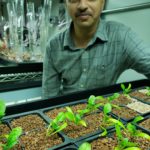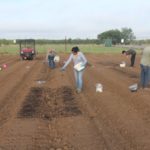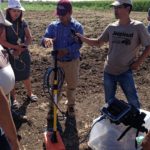UVALDE – Texas A&M AgriLife research will collaborate with the Texas Department of Agriculture and the University of California at Davis on a project to help agricultural producers and consumers through improving nitrogen use efficiency and food safety in spinach.
AgriLife Research study examines humic substances as soil amendment | AgriLife Today
UVALDE – A recent study by Texas A&M AgriLife Research scientists at the Texas A&M AgriLife Research and Extension Center in Uvalde shows applying a soil amendment containing humic substances can positively affect vegetable growth and soil properties under different environments.
The study, “Lignite-derived humic substances modulate pepper and soil-biota growth under water deficit stress,” was conducted by AgriLife Research graduate student Kuan Qin in collaboration with center director and plant physiologist Dr. Daniel Leskovar. It is currently under review for publication in the Journal of Plant Nutrition and Soil Science.
Incredible Edible Insect Event in San Antonio a ‘tasteful’ experience
SAN ANTONIO — More than 300 people attended the recent Incredible Edible Insect Event held in the culinary garden area of the San Antonio Botanical Garden.
The event, which included a four-course tasting of foods made with insect-based ingredients, was presented by the Texas A&M AgriLife Extension Service in Bexar County in collaboration with the botanical garden and other nature-oriented organizations.
Study shows ground-penetrating radar can detect fine roots in crops | AgriLife Today
UVALDE – A recent study led Texas A&M AgriLife Research has shown ground-penetrating radar, or GPR, may be effectively used in detecting the fine roots of plants, helping agricultural producers identify what crop varieties are best suited to their field conditions.
Soil cores were collected immediately after scanning and the core samples containing roots were stored in a freezer until processing. The roots were then cleaned and scanned on a flatbed scanner where root diameter was analyzed. After scanning, roots were oven-dried until constant mass and root dry mass was recorded.


